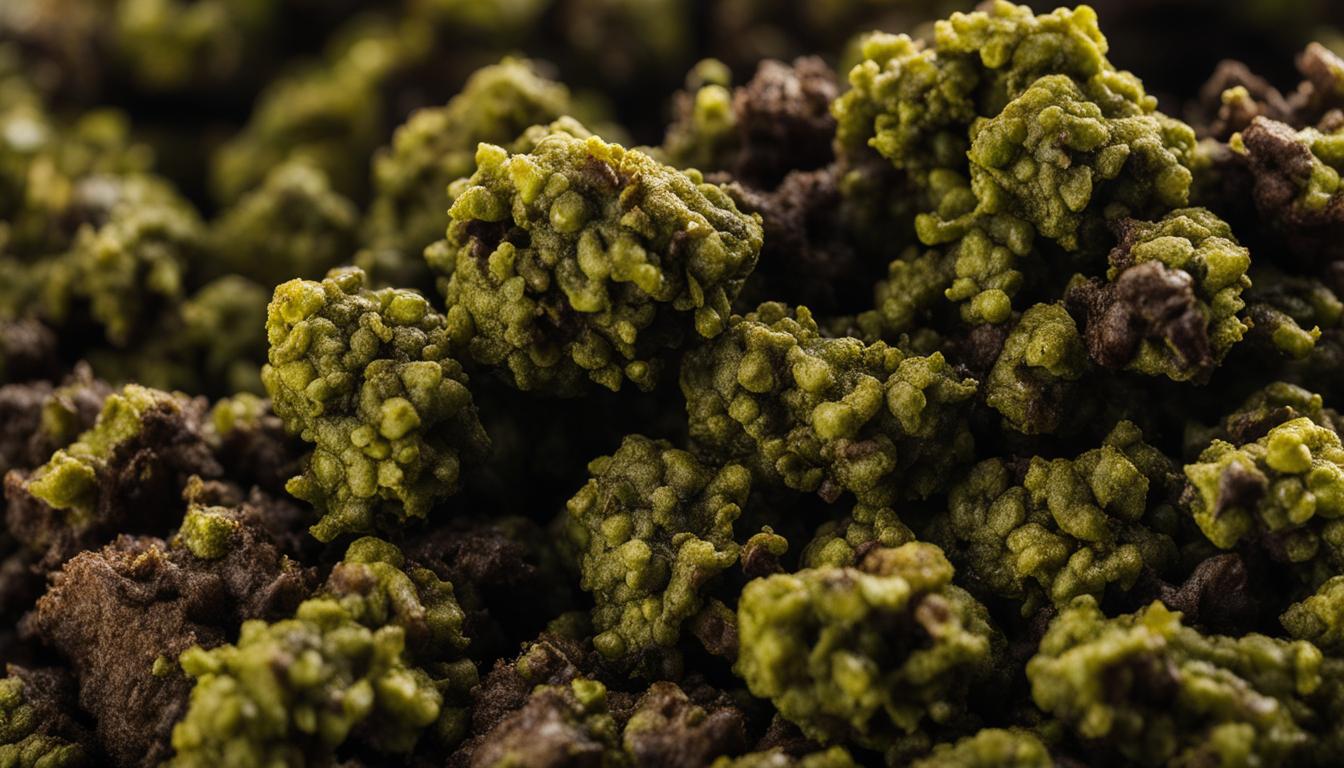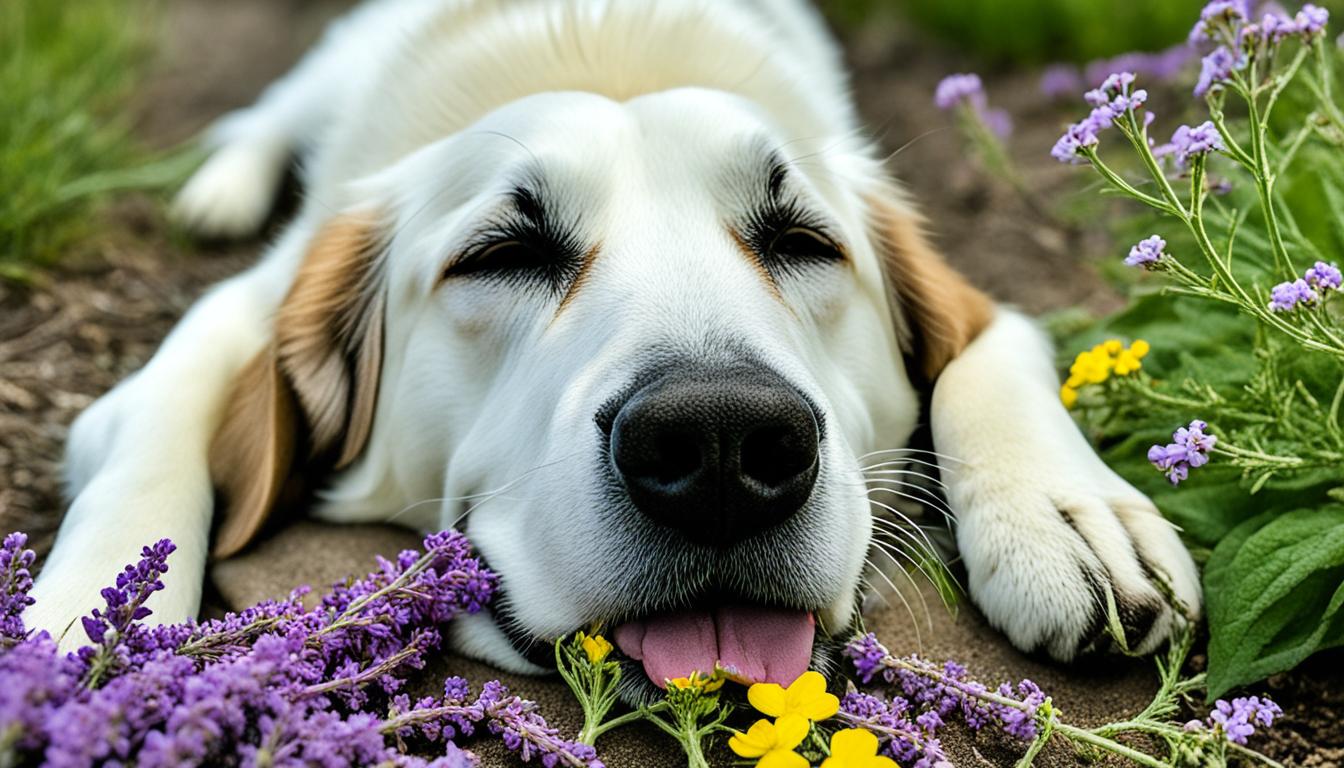The enchanting beauty of the Autumn Crocus, or Colchicum autumnale, belies its dangerous properties, especially when it comes to our beloved canine companions. Known also as Meadow Saffron or Naked Lady, this plant’s alluring petals conceal the toxic substance colchicine, presenting a grave risk to dogs that may come across it. Understanding the dangers of Autumn Crocus for dogs is essential for pet owners who wish to maintain the highest standards of canine health. Ingestion of this plant can lead to a cascade of severe health issues, ranging from gastrointestinal discomfort to potential organ damage and even death. Proactive measures for keeping dogs safe from Autumn Crocus can save not only distress but potentially a pet’s life.
Our gardens and homes can be sanctuaries of joy for our pets, but lurking dangers like the Autumn Crocus require vigilance. Recognising and removing these toxic plants is a crucial step every dog owner should take to prevent accidental poisoning. This guide intends to empower you with knowledge and actionable strategies to protect your trusted furry friends from unforeseen harm.
Key Takeaways
- Autumn Crocus contains colchicine, a toxic substance harmful to dogs.
- Immediate and delayed symptoms from ingestion can be severe or fatal.
- Proactive identification and removal of this plant are vital for canine safety.
- Being vigilant in monitoring dog’s interactions with plants is crucial.
- Rapid response to suspected ingestion could be life-saving.
- Understanding the potential risks can help prevent incidents of toxicity.
Understanding Autumn Crocus and Its Danger to Dogs
When one thinks of the potential hazards that our canine friends might encounter outdoors, the graceful Autumn Crocus plant might seem an unlikely threat. Yet, contrary to their delicate appearance, these plants harbour a hidden danger to dogs that are as unforeseen as it is serious. Distinguishing between the relatively harmless Spring Crocus and the perilous Autumn Crocus is vital for dog owners, particularly due to the stark contrast in the effects they can have on our pets. This section aims to dissect the differences between the two varieties and shed light on the toxic compounds that make the Autumn Crocus a concern for dog safety.
The Difference Between Spring and Autumn Crocus Varieties
The Spring Crocus, part of the Iridaceae family, greets us early in the year with its bright blooms, causing only mild unease in dogs should they ingest it. Symptoms like drooling, vomiting, and diarrhoea may manifest, yet these effects seldom escalate to severe health complications. In stark contrast, the Autumn Crocus, belonging to the Liliaceae family, conceals the highly toxic alkaloid colchicine. The geographical location often plays a pivotal role in which Crocus species adorns our gardens, hence awareness and correct identification are important in safeguarding our dogs.
The Toxic Compounds Found in Autumn Crocus
Every segment of the Autumn Crocus plant, from its corm to its cerise petals, is imbued with colchicine, accounting for the effects of Autumn Crocus on dogs that are both immediate and potentially lethal. In the case of accidental ingestion, the Autumn Crocus plant can inflict dogs with serious gastrointestinal disturbances, such as intense drooling and sudden vomiting. Beyond these initial signs, there lies the risk of liver and kidney damage, which can culminate in respiratory failure or, most distressingly, death. Understanding the Autumn Crocus toxicity in dogs is therefore of paramount significance to dog owners for the prompt and effective prevention of poisoning incidents.
- Spring Crocus may cause gastrointestinal upset.
- Autumn Crocus contains colchicine, which can be fatal.
- Geographic location affects the prevalence of each Crocus type.
- Immediate veterinary attention is advised if Autumn Crocus ingestion is suspected.
The mere appearance of the Autumn Crocus cannot be trusted as an indicator of its safety. Dog owners must arm themselves with knowledge and exercise caution with regards to the Autumn Crocus plant and dogs, as this botanical beauty bears consequences that can impact our dogs’ health gravely.
Is Autumn Crocus Poisonous to Dogs?
For dog owners, maintaining the well-being of their furry companions is a priority that can sometimes be challenged by hidden dangers in the garden. A pertinent question that arises is: Is Autumn Crocus poisonous to dogs? The simple and alarming answer is an absolute yes. Dogs, with their inquisitive nature, may unknowingly ingest toxic plants, leading to serious health implications.
As enchanting as they may appear, every part of the Autumn Crocus contains colchicine, a toxic compound that can have catastrophic effects on your dog’s health. When discussing the symptoms of Autumn Crocus poisoning in dogs, it is evident that they can be severe and even life-threatening, warranting immediate attention from pet owners.
- Vigilance is key; ensure Autumn Crocus is not within your dog’s reach.
- Recognize that ingestion can lead to grave symptoms such as vomiting, drooling, or diarrhea.
- Timely veterinary intervention is crucial if poisoning is suspected.
With Autumn Crocus present in the UK, the risk of our dogs encountering and ingesting this plant is not to be underestimated. As the seasons change and the flora blooms, dog owners must be vigilant and take preventative measures to protect their pets from such toxic threats, thereby ensuring their home remains a safe haven for all.
Detecting the Symptoms of Autumn Crocus Poisoning in Dogs
As pet owners, acknowledging the risk of Autumn Crocus toxicity in dogs and being equipped with knowledge about the symptoms is the cornerstone of prevention and swift treatment. When our canine friends come into contact with toxic flora such as the Autumn Crocus, the indications of potential poisoning require immediate recognition and response — a vital aspect in providing proper care and ensuring their safety.
Immediate Signs to Watch For
The initial symptoms following the ingestion of Autumn Crocus can manifest rapidly, and discerning these signs can be the difference been relief and medical emergency. Owners should be alert for changes such as:
- Excessive drooling: An abundance of saliva can be a clear warning sign.
- Vomiting: Sudden vomiting episodes could be a reaction to the ingested toxins.
- Diarrhoea: Digestive distress may indicate the onset of Autumn Crocus poisoning.
- Abdominal pain: If your pet is showing discomfort or pain in the abdominal area, it could be of concern.
Timely intervention is crucial; these symptoms may warrant immediate treatment for Autumn Crocus poisoning in dogs. It is advisable to contact your veterinarian or seek expert advice as soon as any of these signs are detected.
Delayed Reactions and Long-Term Effects
Some responses to toxicity may not appear instantaneously but can have severe implications for canine health if unchecked. It is critical for dog owners to not dismiss any unusual behaviour post possible exposure to Autumn Crocus. Be vigilant for these longer-term effects:
- Respiratory issues: Difficulty in breathing may develop some time after ingestion.
- Liver failure: Indicators of liver distress can include jaundice, or a yellowing of the eyes and skin.
- Seizures: Uncontrolled fitting or tremors could be a sign of central nervous system involvement.
These advanced symptoms could lead to significant health consequences and underscore the importance of prevention of Autumn Crocus toxicity in dogs. Awareness, education, and prompt response in seeking veterinary care could mean the difference in positive outcomes for our pets’ health.
Immediate Actions to Take If Your Dog Ingests Autumn Crocus
Discovering that your dog has ingested Autumn Crocus can be frightening, given the dangers of Autumn Crocus for dogs. Should you find yourself in such a predicament, prompt and decisive action is paramount. Below is a step-by-step guide on what to do if your dog ingests a poisonous plant, with an emphasis on the toxic Autumn Crocus.
- Contact Your Veterinarian or Pet Poison Helpline: The first and most crucial step is to immediately get in touch with a veterinarian or a dedicated helpline, such as Pet Poison Helpline®, for emergency advice.
- Do Not Induce Vomiting Unless Instructed: It’s essential not to induce vomiting in your pet unless explicitly directed by a professional, as this can sometimes cause more harm.
- Gather Evidence: If possible, safely collect a sample of the plant your dog has ingested to aid accurate identification and treatment.
- Monitor Your Pet: Keep a close eye on any changes in your dog’s behaviour or symptoms, and communicate these to the veterinary professional you’re consulting with.
Remember, time is of the essence when dealing with potential poisoning. Having access to the right information and acting swiftly could make a significant difference, potentially saving your beloved dog’s life.
Professional Treatment Options for Autumn Crocus Poisoning
When it comes to the wellbeing of our four-legged friends, understanding the professional treatment options for Autumn Crocus toxicity in dogs is of utmost importance for any concerned dog owner. In the unfortunate event that your pet has come into contact with this hazardous plant, veterinarians have a protocol in place to address such emergencies and provide the highest standard of care.
Diagnosis and Initial Care
Initial veterinary care for Autumn Crocus poisoning in dogs begins with accurate diagnosis, which may include consultation with the Pet Poison Helpline for specific treatment recommendations. Veterinary professionals act swiftly to identify the toxin and assess the level of exposure to determine the course of immediate treatment. This may involve induced vomiting, administration of activated charcoal to prevent further absorption, and supportive care such as intravenous fluids to combat dehydration and electrolyte imbalances caused by gastro-intestinal symptoms.
Long-Term Management and Hospitalisation
In cases of severe poisoning where the prognosis is guarded, long-term management and hospitalisation may be necessary. Monitoring and maintaining your pet’s vital functions will become the focus, with particular attention to renal and liver health, respiratory function, and neurological status. The duration of the hospital stay can range depending on the severity of the symptoms and the amount of Autumn Crocus ingested. Throughout this period, individuals are encouraged to maintain open lines of communication with their veterinary team to stay informed on their pet’s progress and any changes in treatment plans.
Ultimately, the timely reaction to initial symptoms and rapid seeking of veterinary care for Autumn Crocus poisoning in dogs play critical roles in the outcome. The risks posed by the Autumn Crocus remind us of the need for proactive pet safety measures and the value of prompt and expert care in safeguarding our pets’ health.
Professional Treatment Options for Autumn Crocus Poisoning
What is the difference between Spring and Autumn Crocus varieties?
The Spring Crocus, which belongs to the Iridaceae family, can cause mild gastrointestinal symptoms in dogs, while the Autumn Crocus, part of the Liliaceae family, contains toxic alkaloids that can lead to severe poisoning. Geographical location often determines which of the two is more prevalent.
What toxic compounds are found in Autumn Crocus?
Autumn Crocus contains a potent toxic alkaloid known as colchicine. This compound is present in all parts of the plant and can lead to severe health issues, including gastrointestinal upset, bleeding, liver and kidney damage, respiratory failure, and central nervous system effects if ingested by dogs.
Are dogs at risk if they ingest Autumn Crocus?
Yes, dogs are at significant risk if they ingest any part of the Autumn Crocus plant. The ingestion can lead to critical health issues and may even be fatal, making it essential for dog owners to prevent their pets from coming into contact with this plant.
What immediate signs should dog owners watch for regarding Autumn Crocus poisoning?
Dog owners should be on the lookout for immediate symptoms such as excessive drooling, vomiting, diarrhoea, and abdominal pain — these may be indications of Autumn Crocus poisoning in dogs.
Are there delayed reactions and long-term effects of Autumn Crocus poisoning in dogs?
Yes, delayed reactions can occur. Dog owners should watch for long-term effects such as central nervous system signs, including seizures, liver failure, and difficulty in breathing, which may be indicative of severe poisoning and require immediate veterinary attention.
What should I do if I suspect my dog has ingested Autumn Crocus?
Prompt action is imperative if your dog has ingested Autumn Crocus. Contact your veterinarian or a pet poison helpline immediately, and if possible, bring a sample of the plant for accurate identification and swift treatment.
What does diagnosis and initial care involve for a dog suspected of Autumn Crocus poisoning?
Diagnosis typically includes a thorough examination and may involve consulting with a pet poison helpline. Initial care aims at symptom management, which can involve inducing vomiting, administering activated charcoal, and providing supportive care.
What does long-term management and hospitalisation involve for a dog with Autumn Crocus poisoning?
Long-term management may require hospitalisation for continuous monitoring, intravenous fluids, medications to protect the liver and kidneys, and treatment of any central nervous system effects. The overall prognosis depends on the amount of plant ingested and the promptness of treatment.







